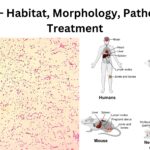IB Biology 10 Views 1 Answers
Sourav Pan🥇 GoldNovember 8, 2024
How can an absorption spectrum for chlorophyll and an action spectrum for photosynthesis be designed experimentally?
How can an absorption spectrum for chlorophyll and an action spectrum for photosynthesis be designed experimentally?
Please login to save the post
Please login to submit an answer.
Sourav Pan🥇 GoldMay 15, 2025
To design an absorption spectrum for chlorophyll and an action spectrum for photosynthesis experimentally, specific methodologies can be employed. Here’s a detailed overview of the procedures involved in generating each spectrum:
Designing an Absorption Spectrum for Chlorophyll
Materials Needed
- Spectrophotometer: A device to measure the absorbance of light at various wavelengths.
- Chlorophyll Extract: Typically obtained from plant leaves (e.g., spinach) using solvents like acetone or ethanol.
- Cuvettes: For holding the chlorophyll solution during spectrophotometry.
- Light Source: A lamp that emits a broad spectrum of light.
Experimental Procedure
- Preparation of Chlorophyll Extract:
- Collect fresh leaves and grind them using a blender with a suitable solvent (e.g., acetone).
- Filter the mixture to obtain a clear chlorophyll extract.
- Set Up the Spectrophotometer:
- Calibrate the spectrophotometer according to the manufacturer’s instructions.
- Use a blank cuvette containing only the solvent to zero the spectrophotometer.
- Measure Absorbance:
- Insert the cuvette with the chlorophyll extract into the spectrophotometer.
- Set the wavelength to 380 nm and measure absorbance, then change the wavelength in increments (e.g., 20 nm) up to 700 nm, recording absorbance at each step.
- Repeat measurements for accuracy.
- Plotting the Absorption Spectrum:
- Plot the recorded absorbance values against their corresponding wavelengths on a graph.
- The x-axis represents wavelength (nm), and the y-axis represents absorbance (% or arbitrary units).
- Identify peaks in blue (around 430 nm) and red (around 662 nm) regions, indicating high absorption, and a trough in the green region (around 500-550 nm).
Designing an Action Spectrum for Photosynthesis
Materials Needed
- Aquatic Plant (e.g., Elodea or Cabomba): A plant that can photosynthesize underwater.
- Light Source with Color Filters: Filters to isolate specific wavelengths of light (blue, green, red).
- Oxygen Sensor or Gas Collection Apparatus: To measure oxygen production as an indicator of photosynthesis.
Experimental Procedure
- Set Up Experimental Apparatus:
- Place the aquatic plant in a beaker filled with water. Ensure it is healthy and acclimated to light conditions.
- Light Treatment:
- Use different color filters to expose the plant to specific wavelengths of light. Common filters include blue (450 nm), green (520 nm), and red (660 nm).
- Include a control setup with no filter (white light).
- Measure Rate of Photosynthesis:
- For each light condition, measure the rate of photosynthesis by counting oxygen bubbles produced per minute or using an oxygen sensor to quantify dissolved oxygen levels over time.
- Conduct multiple trials for each light condition to ensure reliability.
- Plotting the Action Spectrum:
- Plot the rate of photosynthesis against wavelength on a graph.
- The x-axis represents wavelength (nm), while the y-axis represents the rate of photosynthesis (% of maximum rate).
- Identify peaks at blue and red wavelengths, indicating effective photosynthesis, with a trough in the green region.
0
0 likes
- Share on Facebook
- Share on Twitter
- Share on LinkedIn
0 found this helpful out of 0 votes
Helpful: 0%
Helpful: 0%
Was this page helpful?




